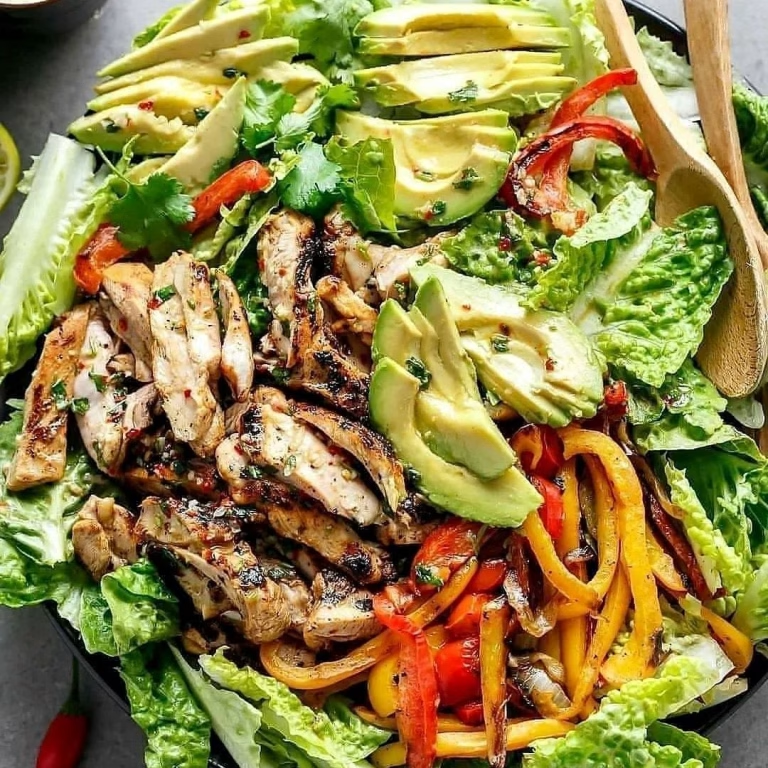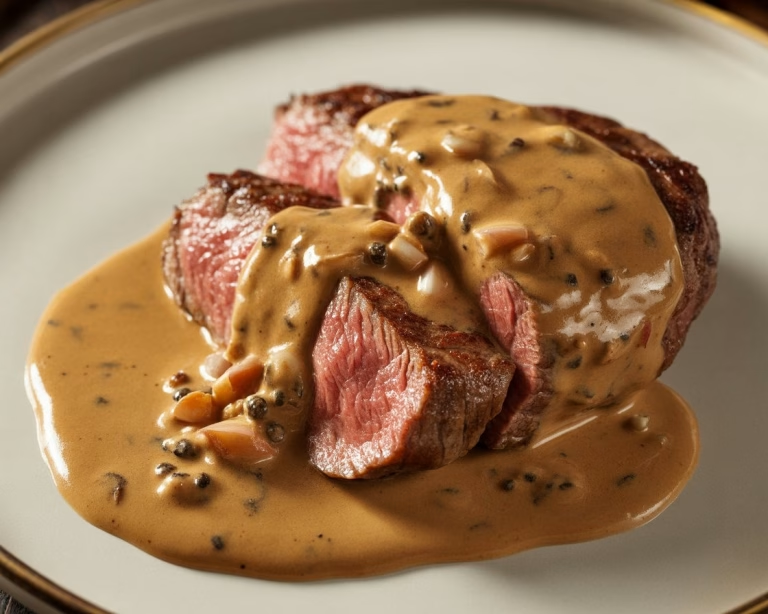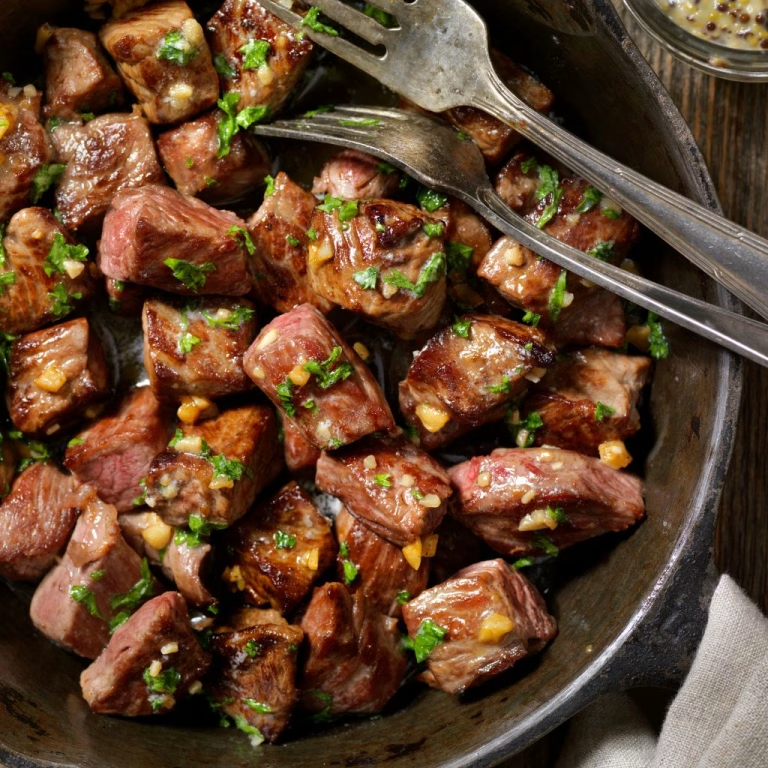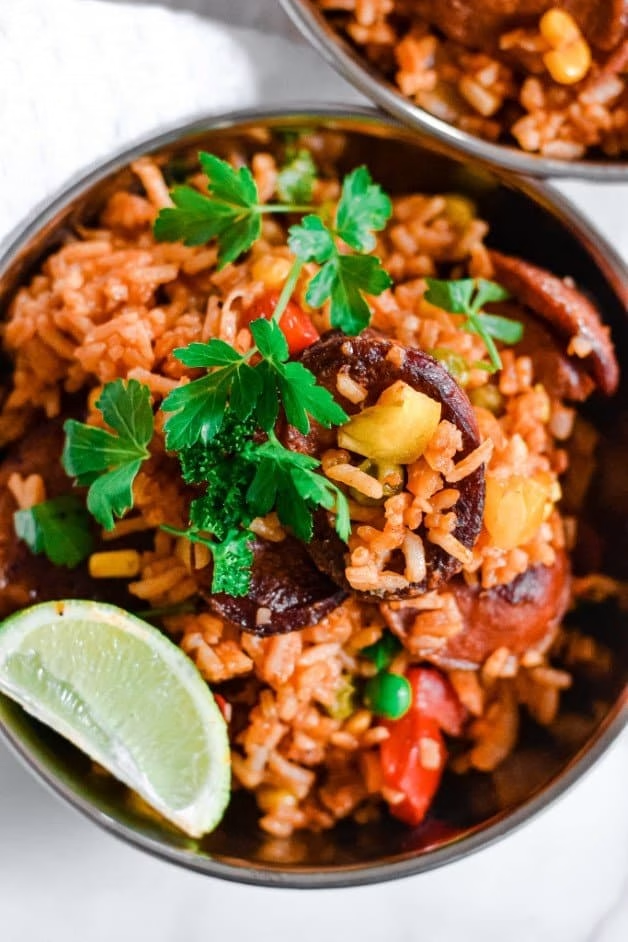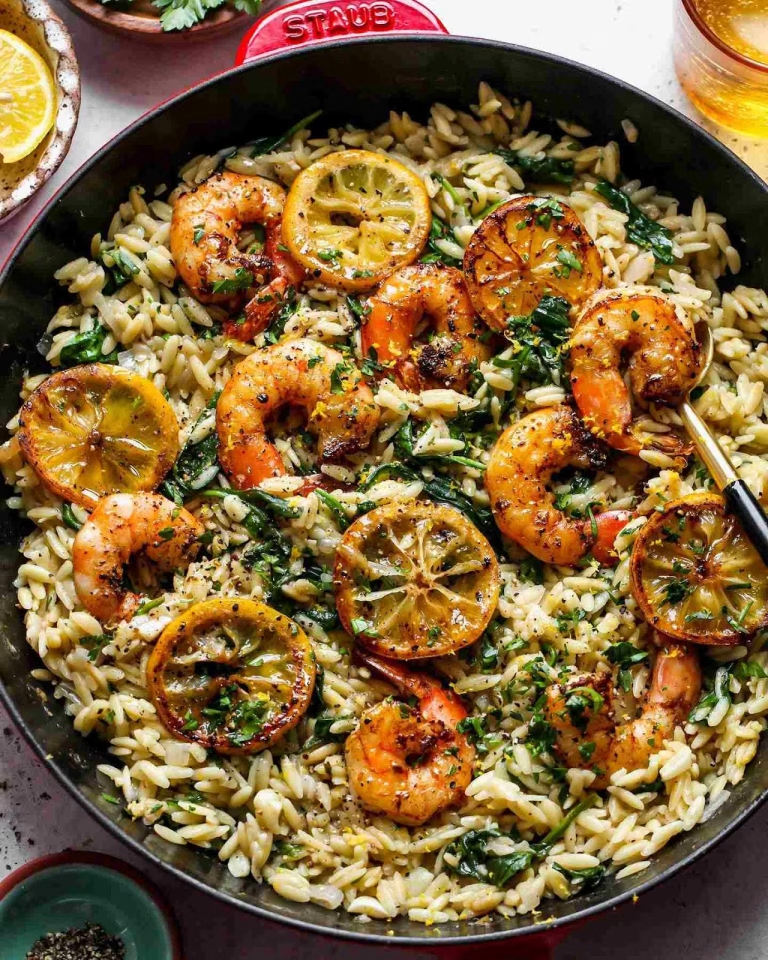Dijon Baked Salmon Recipe | Simple, Juicy, Flavor-Packed
I just tried this Dijon baked salmon recipe last week, and I must tell you — it’s become a dinner favorite in my home. I love how the tangy Dijon mustard and garlic dance together under a golden crust, all while the salmon stays moist and flaky inside.
It feels like a fancy meal, yet it’s so easy that I’ve already made it multiple times. Every time I cook it, I think, “Why did I wait so long to try this?”
If you enjoy seafood as much as I do, you can also enjoy a similar one skillet salmon with lemon orzo recipe for another simple yet impressive dinner. Let me walk you through how I make it (and how you can too).
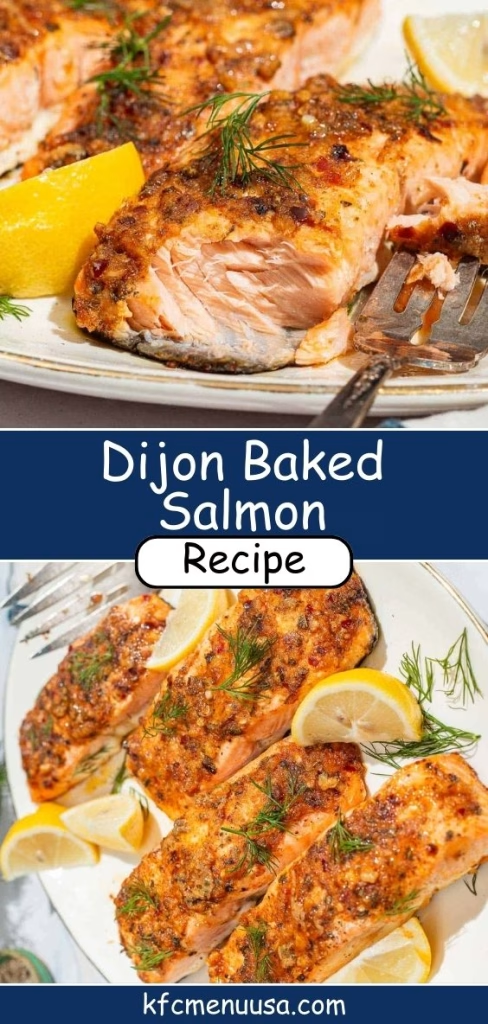
Ingredients
Here’s what I use — along with little tips I’ve learned along the way:
For the Garlic-Dijon Sauce:
- ¼ cup extra virgin olive oil — gives richness and helps the sauce coat the salmon evenly (I always choose a good quality EVOO for flavor)
- Zest and juice of 1 small lemon — the citrus brightness balances the richness of the salmon
- 1½ teaspoons Dijon mustard — adds that peppery, tangy kick (avoid substituting with plain yellow mustard)
- 3 large garlic cloves, minced — fresh garlic gives depth; garlic powder would be a weaker substitute
- 1 teaspoon dried oregano — brings a Mediterranean herbal note
- ½ teaspoon ground coriander — a subtle warm fragrance (don’t confuse with fresh cilantro)
- ½ teaspoon sweet paprika — adds gentle color and mild sweetness
- ½ teaspoon red pepper flakes (optional) — for a hint of heat
For the Salmon:
- Extra virgin olive oil (a little for brushing)
- 4 salmon fillets (5 ounces each, skin-on center cut preferred) — skin-on helps hold the fish together and cook more evenly
- Kosher salt (about ½ teaspoon per fillet)
- Freshly ground black pepper (about ½ teaspoon per fillet)
- 2 tablespoons chopped fresh dill — adds brightness and a fresh herb finish
- 1 small lemon, cut into wedges — for serving
Note: serves 4
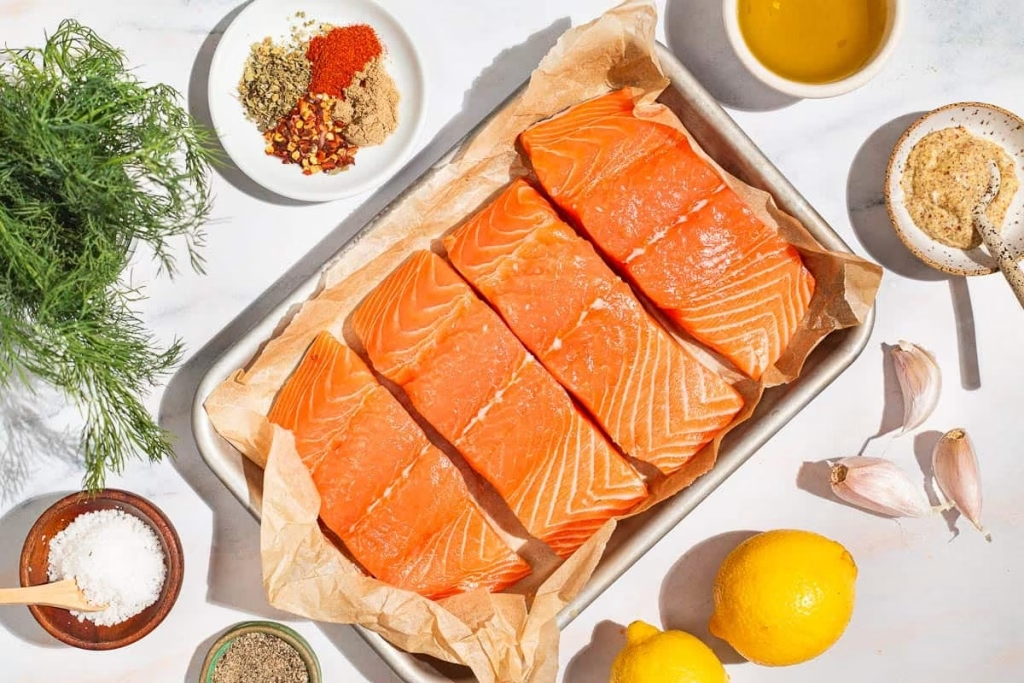
Variations
If you want to tweak the recipe, here are a few ideas:
- Dairy-free: This recipe is naturally dairy-free, so no change needed.
- Sugar-free / low in added sugar: There’s essentially no added sugar, so it’s already well suited to sugar-free diets.
- Flavor add-ins: Try swapping oregano for thyme or basil, or fold in some chopped capers or sun-dried tomato bits into the sauce for extra punch.
- Herb swap: If you don’t have dill, parsley, cilantro, or tarragon work nicely.
- Fish alternative: Use halibut, cod, or trout — just adjust the cooking time depending on thickness.
Cooking Time
Here’s how long it takes:
- Prep Time: 10 minutes
- Cooking Time: 10 minutes (plus a few minutes under the broiler)
- Total Time: 30 minutes (including resting)
Equipment You Need
These tools will make the recipe smoother:
- Baking sheet lined with foil — to trap steam and prevent sticking
- Parchment paper (optional) — to ease cleanup and help prevent sticking
- Mixing bowl — to whisk up the Dijon garlic sauce
- Whisk or fork — to combine the sauce ingredients well
- Instant-read thermometer (optional) — helpful to check internal doneness
How to Make Dijon Baked Salmon
Preheat and Prep
I start by placing one rack in the middle and another about 6 inches from the broiler. Then I preheat the oven to 375 °F (around 190–200 °C). Meanwhile, I line a baking sheet with foil and lay a piece of parchment on top, brushing it lightly with olive oil.
Season the Salmon
I pat my salmon fillets dry and place them skin-side down on the prepared sheet. I then sprinkle salt and black pepper over each with about ½ teaspoon each, making sure it’s evenly seasoned.
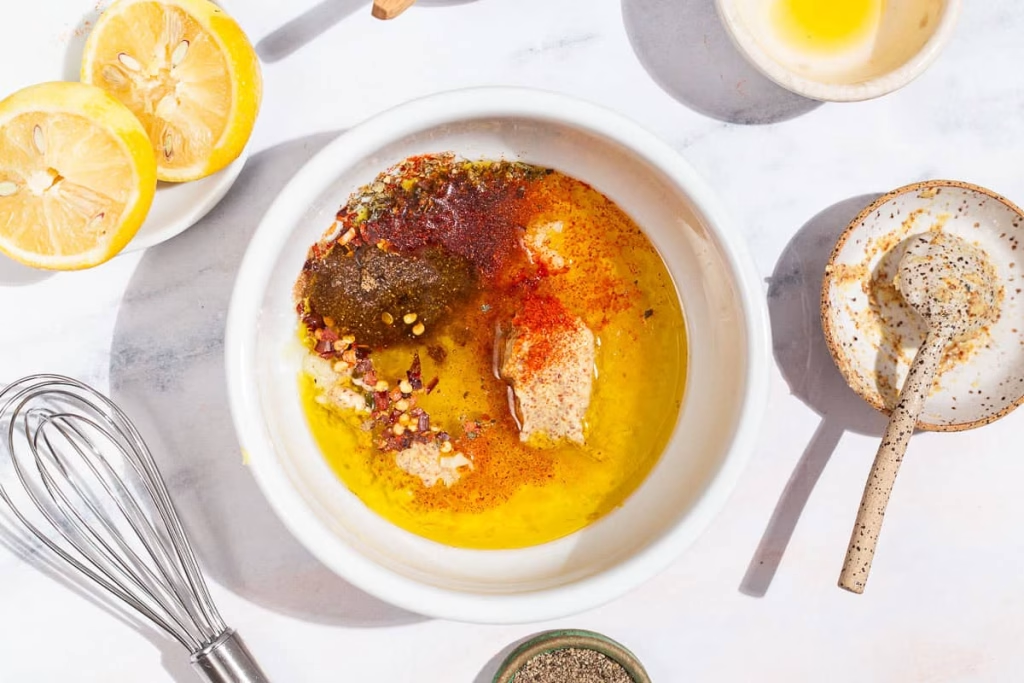
Whisk the Sauce
In a small bowl, I whisk together ¼ cup olive oil, the lemon zest and juice, Dijon mustard, minced garlic, oregano, coriander, paprika, and optional red pepper flakes. Once the sauce is smooth, I spread it over the top and sides of each salmon fillet.
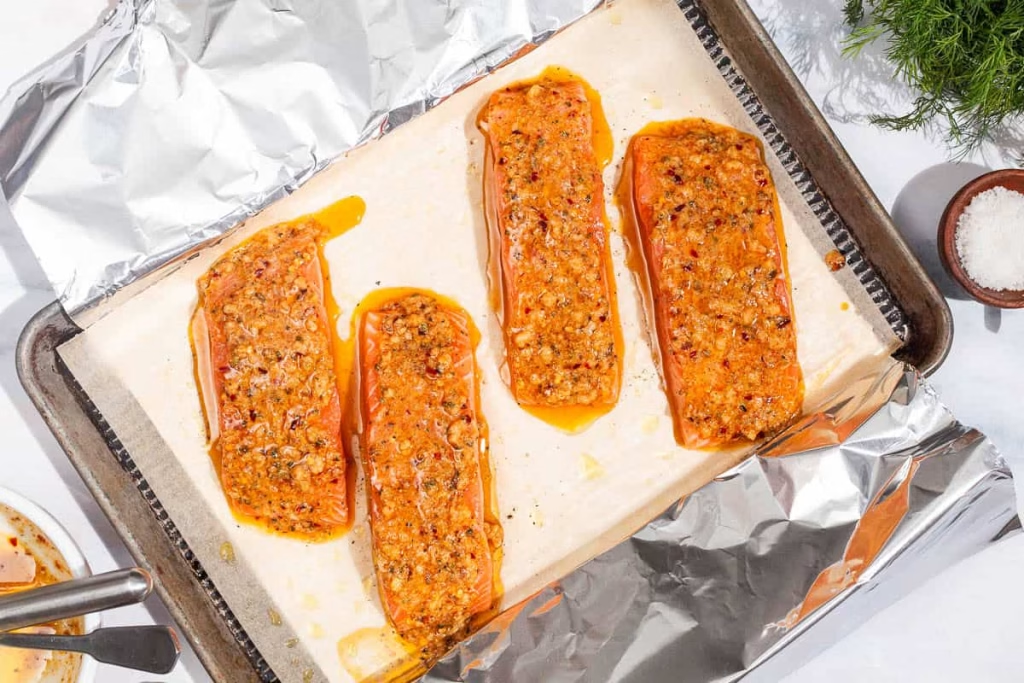
Bake, Then Broil
I fold the foil up over the fish, making a “tent” so it doesn’t touch the salmon, and seal the edges. I bake it for about 15–20 minutes (checking earlier if your fillets are thin) until it’s nearly done in the thickest part. Then I open the foil, move the salmon to the top rack, set the broiler to high, and broil for 2–3 minutes until the top lightly browns. I keep a close eye so it doesn’t burn.
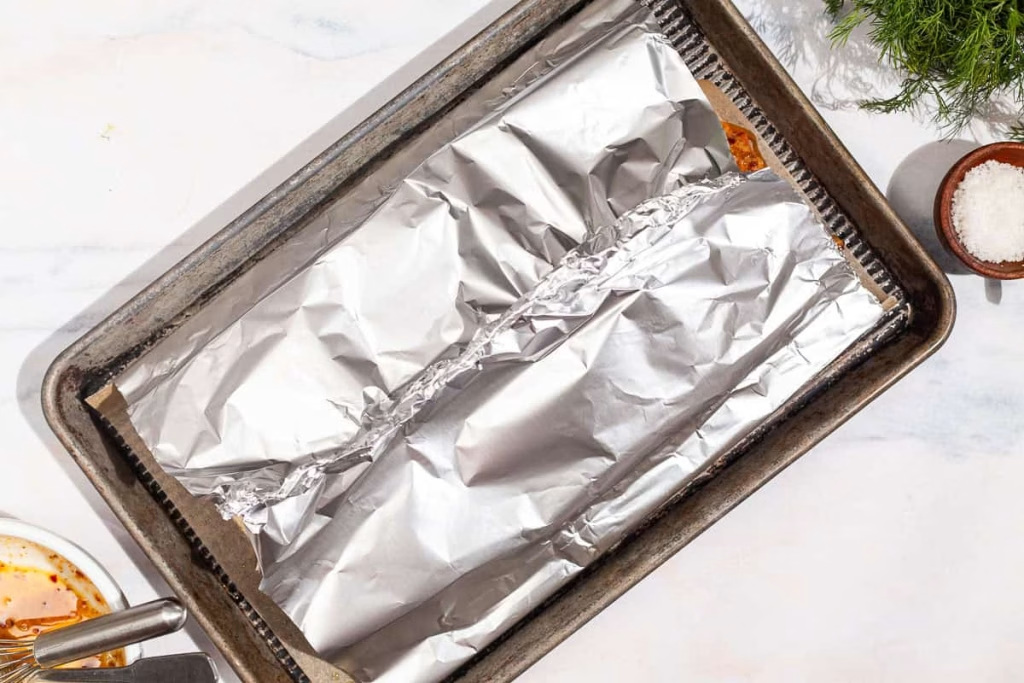
Finish and Serve
Once out of the oven, I sprinkle chopped fresh dill over the fillets and serve with lemon wedges on the side.
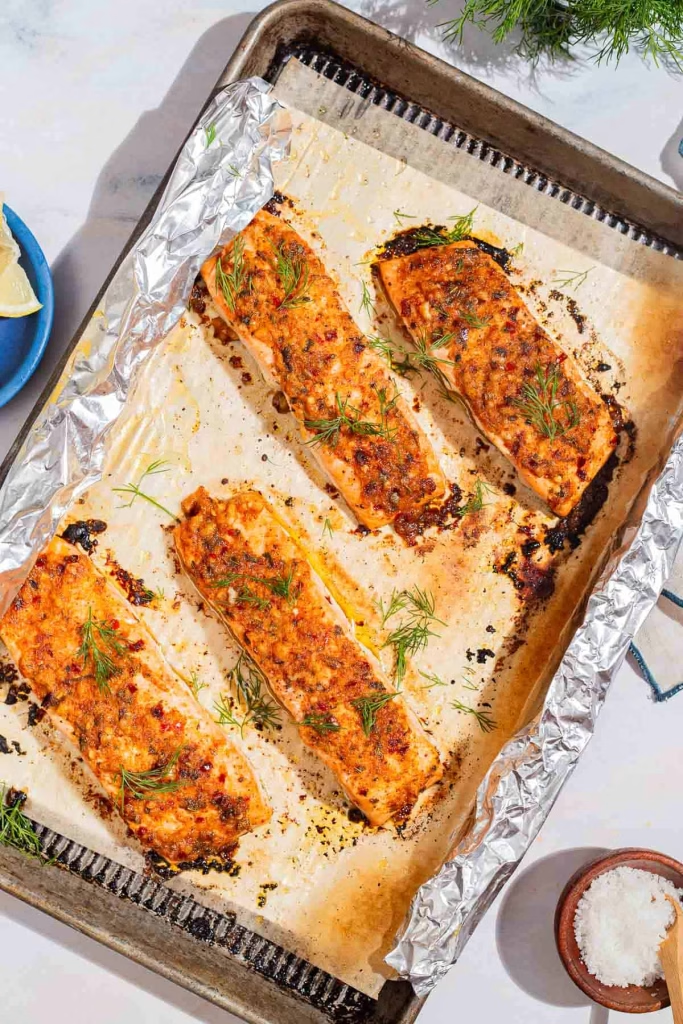
Additional Tips for Making This Recipe Better
Based on my trial runs, here are some tweaks I use:
- I almost always use skin-on fillets — the skin helps hold the fish together and adds flavor.
- I let the sauce sit for a minute or two after whisking to let flavors meld before applying it.
- I check doneness a bit early; salmon finishes cooking from residual heat, so pulling it just before fully done helps avoid dryness.
- I tent the foil high — too tight a foil wrap can squash the seasoning on top.
- I always save a little extra sauce to drizzle over after baking — it keeps the fish extra moist.
How to Serve Dijon Baked Salmon
This salmon looks gorgeous on the plate. I usually arrange the fillets on a platter, drizzle any leftover sauce over them, and add lemon slices and sprigs of fresh dill. It pairs beautifully with couscous, quinoa, steamed vegetables, or a crisp green salad. If you enjoy Southern flavors, try pairing it with something like this blackened fish and cheese grits recipe for a fun contrast.
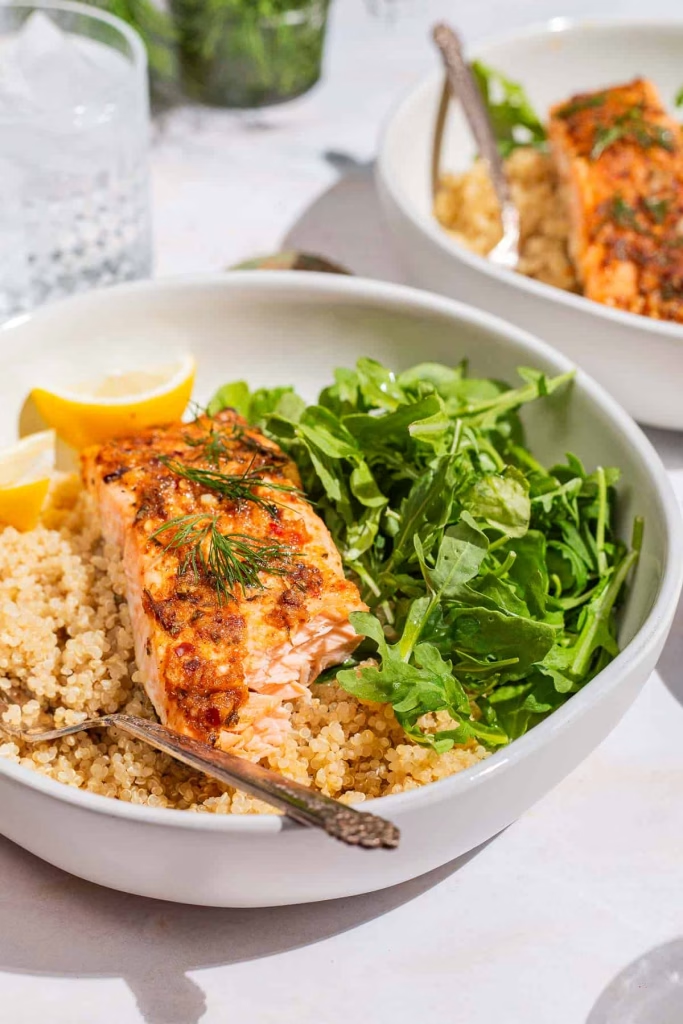
Nutritional Information
Here’s a rough breakdown per serving:
- Calories: ~ 344 kcal
- Protein: ~ 29 g
- Carbohydrates: ~ 6.6 g
- Fat: ~ 22.9 g
Make Ahead and Storage
Storage
You can keep leftover salmon in an airtight container in the fridge for up to 2 days.
Freezing
To freeze, wrap tightly in plastic and foil or place in freezer bags. It stays good for up to 1 month.
Reheating
I gently reheat in a low oven (around 275–300 °F / 135–150 °C) for about 8–10 minutes, or until warm. Avoid microwaving, as that can dry the fish out.
Why You’ll Love This Recipe
I truly believe this recipe has something for everyone:
- It’s so easy to make — even for weeknights, with minimal fuss.
- The flavor balance is excellent — tangy Dijon, citrus brightness, savory garlic and herbs.
- It’s versatile and forgiving — you can swap herbs or fish type and still end up with success.
- It stays moist and tender — the foil method helps prevent overcooking.
- It’s impressive yet approachable — perfect for guests or a cozy dinner.
For even more weeknight inspiration, you can browse through many other dinner recipes that are just as simple and satisfying.

Dijon Baked Salmon Recipe
Ingredients
Method
- I start by placing one rack in the middle and another about 6 inches from the broiler. Then I preheat the oven to 375 °F (around 190–200 °C). Meanwhile, I line a baking sheet with foil and lay a piece of parchment on top, brushing it lightly with olive oil.
- I pat my salmon fillets dry and place them skin-side down on the prepared sheet. I then sprinkle salt and black pepper over each with about ½ teaspoon each, making sure it’s evenly seasoned.
- In a small bowl, I whisk together ¼ cup olive oil, the lemon zest and juice, Dijon mustard, minced garlic, oregano, coriander, paprika, and optional red pepper flakes. Once the sauce is smooth, I spread it over the top and sides of each salmon fillet.
- I fold the foil up over the fish, making a “tent” so it doesn’t touch the salmon, and seal the edges. I bake it for about 15–20 minutes (checking earlier if your fillets are thin) until it’s nearly done in the thickest part. Then I open the foil, move the salmon to the top rack, set the broiler to high, and broil for 2–3 minutes until the top lightly browns. I keep a close eye so it doesn’t burn.
- Once out of the oven, I sprinkle chopped fresh dill over the fillets and serve with lemon wedges on the side.
Notes
- I almost always use skin-on fillets — the skin helps hold the fish together and adds flavor.
- I let the sauce sit for a minute or two after whisking to let flavors meld before applying it.
- I check doneness a bit early; salmon finishes cooking from residual heat, so pulling it just before fully done helps avoid dryness.
- I tent the foil high — too tight a foil wrap can squash the seasoning on top.
- I always save a little extra sauce to drizzle over after baking — it keeps the fish extra moist.

